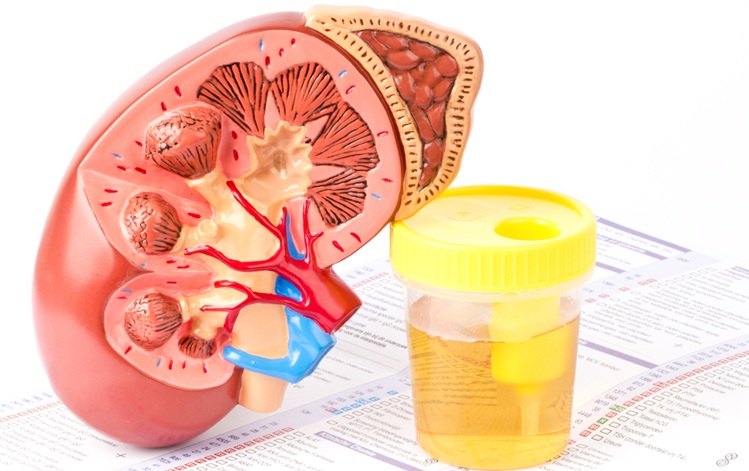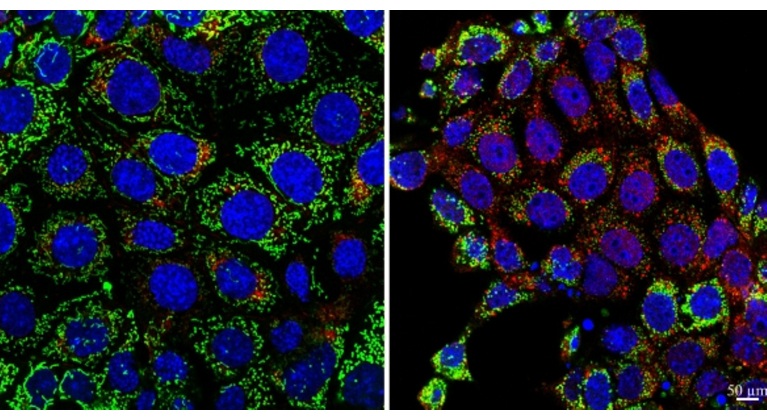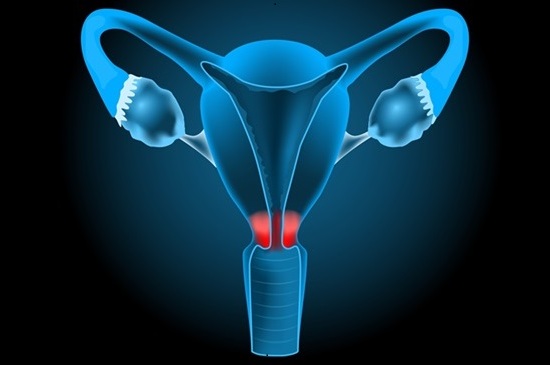Immuno-CRISPR Assay Helps Diagnose Early Kidney Transplant Rejection
|
By LabMedica International staff writers Posted on 20 Jan 2022 |

Image: Highly Sensitive Immuno-CRISPR Assay Developed for CXCL9 Detection Helps Diagnose Early Kidney Transplant Rejection (Photo courtesy of Rensselaer Polytechnic Institute)
When a patient receives a kidney transplant, doctors carefully monitor them for signs of rejection in several ways, including biopsy. However, this procedure is invasive and can only detect issues at a late stage.
Kidney transplant recipients must take immunosuppressant drugs for the rest of their lives to help keep their immune systems from attacking the foreign organ. However, kidney rejection can still occur, particularly in the first few months after transplantation, which is known as acute rejection. Signs include increased serum creatinine levels and symptoms such as kidney pain and fever.
Biomedical Engineers at the Rensselaer Polytechnic Institute (Troy, NY, USA) developed a CRISPR-based assay that can sensitively and non-invasively detect a biomarker of acute kidney rejection in urine. CRISPR-based detection of target DNA or RNA exploits a dual function, including target sequence-specific recognition followed by trans-cleavage activity of a collateral single strand DNA (ssDNA) linker between a fluorophore (F) and a quencher (Q), which amplifies a fluorescent signal upon cleavage.
To establish the “immuno-CRISPR” assay, the scientists used anti-CXCL9 antibody–DNA barcode conjugates to target CXCL9 and amplify fluorescent signals via Cas12a-based trans-cleavage activity of FQ reporter substrates, respectively, and in the absence of an isothermal amplification step. To enhance detection sensitivity, the DNA barcode system was engineered by introducing multiple Cas12a recognition sites. Use of biotinylated DNA barcodes enabled self-assembly onto streptavidin (SA) to generate SA–DNA barcode complexes to increase the number and density of Cas12a recognition sites attached to biotinylated anti-CXCL9 antibody.
The investigators improved the rate of CXCL9 detection approximately 8-fold when compared to the use of a monomeric DNA barcode. The limit of detection (LOD) for CXCL9 using the immuno-CRISPR assay was 14 pg/mL, which represented an ∼7-fold improvement when compared to traditional HRP-based ELISA. Selectivity was shown with a lack of crossover reactivity with the related chemokine CXCL1. Finally, they successfully evaluated the presence of CXCL9 in urine samples from 11 kidney transplant recipients using the immuno-CRISPR assay, resulting in 100% accuracy to clinical CXCL9 determination and paving the way for use as a point-of-care noninvasive biomarker for the detection of kidney transplant rejection.
The authors concluded that importantly, unlike other CRISPR-based detection methods, PCR amplification is not required, which makes the method easier to adapt to a device that could be used in a doctor's office or even a patient's home. The study was published on December 4, 2021, in the journal Analytical Chemistry.
Related Links:
Rensselaer Polytechnic Institute
Kidney transplant recipients must take immunosuppressant drugs for the rest of their lives to help keep their immune systems from attacking the foreign organ. However, kidney rejection can still occur, particularly in the first few months after transplantation, which is known as acute rejection. Signs include increased serum creatinine levels and symptoms such as kidney pain and fever.
Biomedical Engineers at the Rensselaer Polytechnic Institute (Troy, NY, USA) developed a CRISPR-based assay that can sensitively and non-invasively detect a biomarker of acute kidney rejection in urine. CRISPR-based detection of target DNA or RNA exploits a dual function, including target sequence-specific recognition followed by trans-cleavage activity of a collateral single strand DNA (ssDNA) linker between a fluorophore (F) and a quencher (Q), which amplifies a fluorescent signal upon cleavage.
To establish the “immuno-CRISPR” assay, the scientists used anti-CXCL9 antibody–DNA barcode conjugates to target CXCL9 and amplify fluorescent signals via Cas12a-based trans-cleavage activity of FQ reporter substrates, respectively, and in the absence of an isothermal amplification step. To enhance detection sensitivity, the DNA barcode system was engineered by introducing multiple Cas12a recognition sites. Use of biotinylated DNA barcodes enabled self-assembly onto streptavidin (SA) to generate SA–DNA barcode complexes to increase the number and density of Cas12a recognition sites attached to biotinylated anti-CXCL9 antibody.
The investigators improved the rate of CXCL9 detection approximately 8-fold when compared to the use of a monomeric DNA barcode. The limit of detection (LOD) for CXCL9 using the immuno-CRISPR assay was 14 pg/mL, which represented an ∼7-fold improvement when compared to traditional HRP-based ELISA. Selectivity was shown with a lack of crossover reactivity with the related chemokine CXCL1. Finally, they successfully evaluated the presence of CXCL9 in urine samples from 11 kidney transplant recipients using the immuno-CRISPR assay, resulting in 100% accuracy to clinical CXCL9 determination and paving the way for use as a point-of-care noninvasive biomarker for the detection of kidney transplant rejection.
The authors concluded that importantly, unlike other CRISPR-based detection methods, PCR amplification is not required, which makes the method easier to adapt to a device that could be used in a doctor's office or even a patient's home. The study was published on December 4, 2021, in the journal Analytical Chemistry.
Related Links:
Rensselaer Polytechnic Institute
Latest Technology News
- Viral Biosensor Test Simultaneously Detects Hepatitis and HIV
- Acoustofluidic Device to Transform Point-Of-Care sEV-Based Diagnostics
- AI Algorithm Assesses Progressive Decline in Kidney Function
- Taste-Based Influenza Test Could Replace Nasal Swabs with Chewing Gum
- 3D Micro-Printed Sensors to Advance On-Chip Biosensing for Early Disease Detection
- Hybrid Pipette Combines Manual Control with Fast Electronic Aliquoting
- Coral-Inspired Capsule Samples Hidden Bacteria from Small Intestine
- Rapid Diagnostic Technology Utilizes Breath Samples to Detect Lower Respiratory Tract Infections
Channels
Clinical Chemistry
view channel
VOCs Show Promise for Early Multi-Cancer Detection
Early cancer detection is critical to improving survival rates, but most current screening methods focus on individual cancer types and often involve invasive procedures. This makes it difficult to identify... Read more
Portable Raman Spectroscopy Offers Cost-Effective Kidney Disease Diagnosis at POC
Kidney disease is typically diagnosed through blood or urine tests, often when patients present with symptoms such as blood in urine, shortness of breath, or weight loss. While these tests are common,... Read moreMolecular Diagnostics
view channel
Urine Test Could Replace Painful Kidney Biopsies for Lupus Patients
Lupus is an autoimmune disorder that causes the immune system to attack the body’s own tissues and organs. Among the five million people living with lupus globally, nearly half develop lupus nephritis,... Read more
Blood Test Guides Post-Surgical Immunotherapy for Muscle-Invasive Bladder Cancer
After surgery for muscle-invasive bladder cancer, many patients face uncertainty about whether residual cancer cells remain in their bodies. Now, a new international phase 3 study has demonstrated that... Read more
Mitochondrial DNA Mutations from Kidney Stressors Could Predict Future Organ Decline
Kidney-related diseases are alarmingly common: chronic kidney disease (CKD) affects more than one in seven U.S. adults, while about 20% of hospitalized adults are diagnosed with acute kidney injury (AKI).... Read moreHematology
view channel
Viscoelastic Testing Could Improve Treatment of Maternal Hemorrhage
Postpartum hemorrhage, severe bleeding after childbirth, remains one of the leading causes of maternal mortality worldwide, yet many of these deaths are preventable. Standard care can be hindered by delays... Read more
Pioneering Model Measures Radiation Exposure in Blood for Precise Cancer Treatments
Scientists have long focused on protecting organs near tumors during radiotherapy, but blood — a vital, circulating tissue — has largely been excluded from dose calculations. Each blood cell passing through... Read more
Platelets Could Improve Early and Minimally Invasive Detection of Cancer
Platelets are widely recognized for their role in blood clotting and scab formation, but they also play a crucial role in immune defense by detecting pathogens and recruiting immune cells.... Read more
Portable and Disposable Device Obtains Platelet-Rich Plasma Without Complex Equipment
Platelet-rich plasma (PRP) plays a crucial role in regenerative medicine due to its ability to accelerate healing and repair tissue. However, obtaining PRP traditionally requires expensive centrifugation... Read moreImmunology
view channel
Molecular Microscope Diagnostic System Assesses Lung Transplant Rejection
Lung transplant recipients face a significant risk of rejection and often require routine biopsies to monitor graft health, yet assessing the same biopsy sample can be highly inconsistent among pathologists.... Read more
Blood Test Tracks Treatment Resistance in High-Grade Serous Ovarian Cancer
High-grade serous ovarian cancer (HGSOC) is often diagnosed at an advanced stage because it spreads microscopically throughout the abdomen, and although initial surgery and chemotherapy can work, most... Read more
Luminescent Probe Measures Immune Cell Activity in Real Time
The human immune system plays a vital role in defending against disease, but its activity must be precisely monitored to ensure effective treatment in cancer therapy, autoimmune disorders, and organ transplants.... Read more
Blood-Based Immune Cell Signatures Could Guide Treatment Decisions for Critically Ill Patients
When a patient enters the emergency department in critical condition, clinicians must rapidly decide whether the patient has an infection, whether it is bacterial or viral, and whether immediate treatment... Read moreMicrobiology
view channel
Fast Noninvasive Bedside Test Uses Sugar Fingerprint to Detect Fungal Infections
Candida bloodstream infections are a growing global health threat, causing an estimated 6 million cases and 3.8 million deaths annually. Hospitals are particularly vulnerable, as weakened patients after... Read more
Rapid Sepsis Diagnostic Device to Enable Personalized Critical Care for ICU Patients
Sepsis is a life-threatening condition that occurs when the body’s response to infection spirals out of control, damaging organs and leading to critical illness. Patients often arrive at intensive care... Read morePathology
view channel
AI-Powered Method Combines Blood Data to Accurately Measure Biological Age
Chronological age tells us how many years we’ve lived, but not how quickly our bodies are ageing. Some people stay healthy well into their 80s or 90s, while others experience decline much earlier.... Read more
AI Tool Detects Cancer in Blood Samples In 10 Minutes
Detecting cancer recurrence or spread often depends on identifying rare tumor cells circulating in the bloodstream — a process known as a liquid biopsy. However, current methods rely on trained specialists... Read moreIndustry
view channel
Advanced Instruments Merged Under Nova Biomedical Name
Advanced Instruments (Norwood, MA, USA) and Nova Biomedical (Waltham, MA, USA) are now officially doing business under a single, unified brand. This transformation is expected to deliver greater value... Read more




 assay.jpg)




 Analyzer.jpg)







